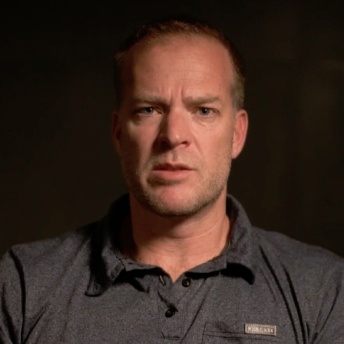
Bringing heart into business
Love. Heart. Humility. The world is changing. There is a new permission to bring a more emotive language into the workplace.

Author
Ross Orwin – Accredited Associate
Explore the ways character development delivers competitive advantage

Love. Heart. Humility. The world is changing. There is a new permission to bring a more emotive language into the workplace.

Ross Orwin – Accredited Associate

We believe an important principle for a leader is to create a safe place. Effective leaders breathe life into the environment by making it a safe place for team members to express opinions and ideas, to disagree and push back...

Stephen Klemich – Founder

In the coming years, the winners in the finance space will be those who can learn from the past to meet the demands of the future. Merely complying with regulations won’t be enough. Instead, organisations will need to look to their cultures as an engine of transformation. Here we explore why change is needed and what it’s likely to look like…

Sandra Bullen – Former Marketing & Communications Director

Whether an organisation is fairly flat or more hierarchically structured, the behaviour of its leaders will inform the way everyone operates...

Ross Orwin – Accredited Associate

Demographic shift means employers often have three, or even four generations working side by side within their organisations. To bring out the best in all of them, it's vital to understand how the norms of their respective eras have shaped their attitudes - and the way they work.

Carly Morgan – Director of Learning Innovation

Most businesses understand the importance of aligning their structure to their strategy. But structure doesn't just shape the org chart - it also shapes people...

Sandra Bullen – Former Marketing & Communications Director

Co-founded by an experienced mountaineer, natural settings have been a big part of Heartstyles from the very beginning. But the outdoors doesn't just inform our thinking - we actually use it as a development tool...

Ross Orwin – Accredited Associate

The Covid-19 pandemic has affected everyone differently. What do organisations do when a contingency plan of ‘expect the unexpected’ falls short of offering practical advice for employees on how to deal with the crisis at hand?

Sandra Bullen – Former Marketing & Communications Director

How does Heartstyles, a psychological behavior tool, fit with neurodiversity? A term that was coined in 1998 is now a social justice movement, promoting the idea that there is no right way to think, learn or behave. The movement began in education and child development, and it has gathered momentum to include adults and the workplace. HR leaders can no longer ignore it, they need to consider the needs of the neurodiverse in their learning and development and their diversity and inclusion plans. We will explore this question from several perspectives.

Sandra Bullen – Former Director of Marketing and Communications

The songwriter Bronnie Ware worked for a while in palliative care helping the terminally ill, and compiled a list of common regrets expressed by the people she cared for. Her list gained huge popularity. How might this apply to, leadership?

Culture. It’s a huge talking point. It effects every person in your organisation and we are increasingly seeing the consequences of effective/ineffective cultures. But what is it? Where does it come from? Can we make a culture better? What do I see in my organizational culture and how do I fit in?

Marc Rogatschnig – Clinical & Consulting Psychologist